If you live in a Tulsa HOA community, your roofing options are not entirely up to you. HOAs enforce rules to maintain a uniform neighborhood look and protect property values. These rules cover materials, colors, styles, and maintenance expectations. Here’s what you need to know:
- Approved Materials: Common options include asphalt shingles, metal roofs, slate, and wood shakes. Architectural shingles are often preferred for their durability and polished appearance.
- Color Guidelines: Neutral tones like gray, black, brown, and earth shades are typically allowed to ensure consistency.
- Maintenance: Regular inspections and timely repairs are required to keep your roof in good condition and compliant with HOA standards.
- Approval Process: Submit a detailed application including plans, material samples, contractor credentials, and permits. Approval can take weeks or months, so plan ahead.
- Disputes: If your application is denied, review the reasons, revise your plans, and communicate respectfully with the HOA. Mediation or legal advice may be necessary for unresolved issues.
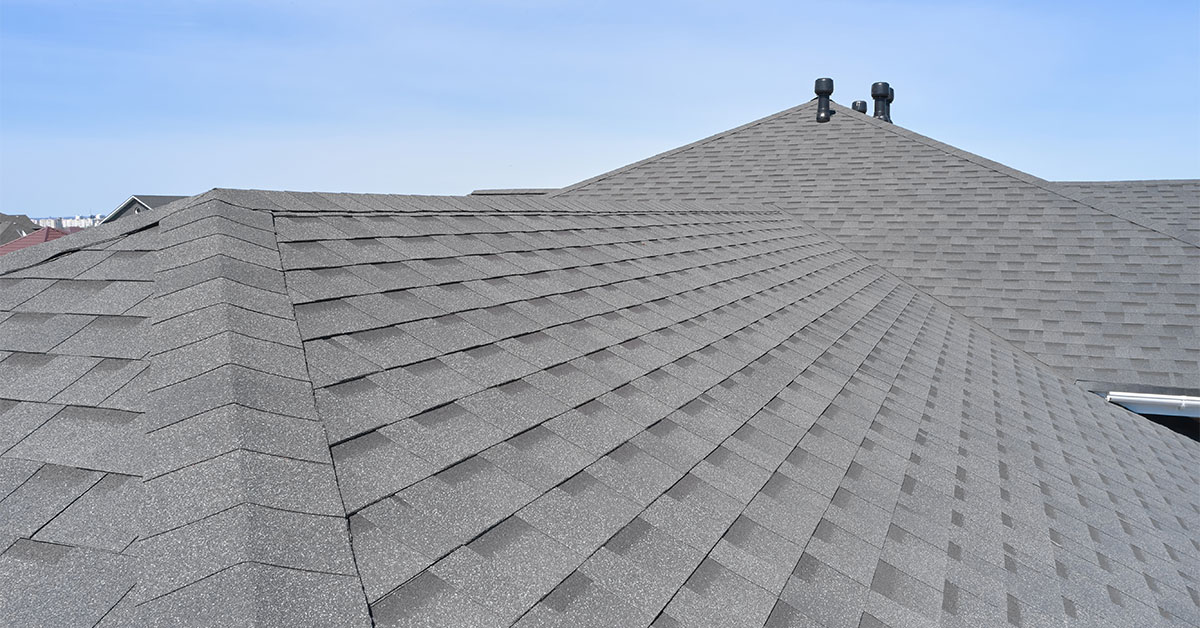
Key Tip: Work with experienced contractors familiar with Tulsa HOA rules to simplify the process and avoid compliance issues. Regular maintenance and clear communication with your HOA can help you avoid fines or disputes.
Why HOAs Can’t Ban Metal Roofs Anymore
Typical HOA Roofing Requirements in Tulsa
In Tulsa, Homeowners Associations (HOAs) often enforce specific roofing guidelines to maintain a consistent look across neighborhoods. These rules usually outline approved materials, acceptable colors and styles, and expectations for roof upkeep. Being familiar with these requirements can make the roofing process smoother. Here’s a closer look at the common standards for materials, colors, and maintenance set by Tulsa HOAs.
Approved Roofing Materials
HOAs in Tulsa typically provide a list of approved roofing materials. Commonly accepted options include asphalt shingles, metal roofs, slate roofs, and wood shakes.
- Asphalt shingles are a popular choice due to their versatility. They can imitate the appearance of more expensive materials like wood, slate, or tile while complying with HOA rules. Architectural shingles are often preferred over 3-tab shingles because they offer better durability and a more polished look.
- Metal roofing stands out for its resilience in harsh weather conditions, including hail and high winds. Stone-coated metal options are particularly appealing, as they replicate traditional materials while meeting HOA aesthetic requirements.
- Slate roofing is a high-end option known for its timeless style, exceptional durability, and fire-resistant properties.
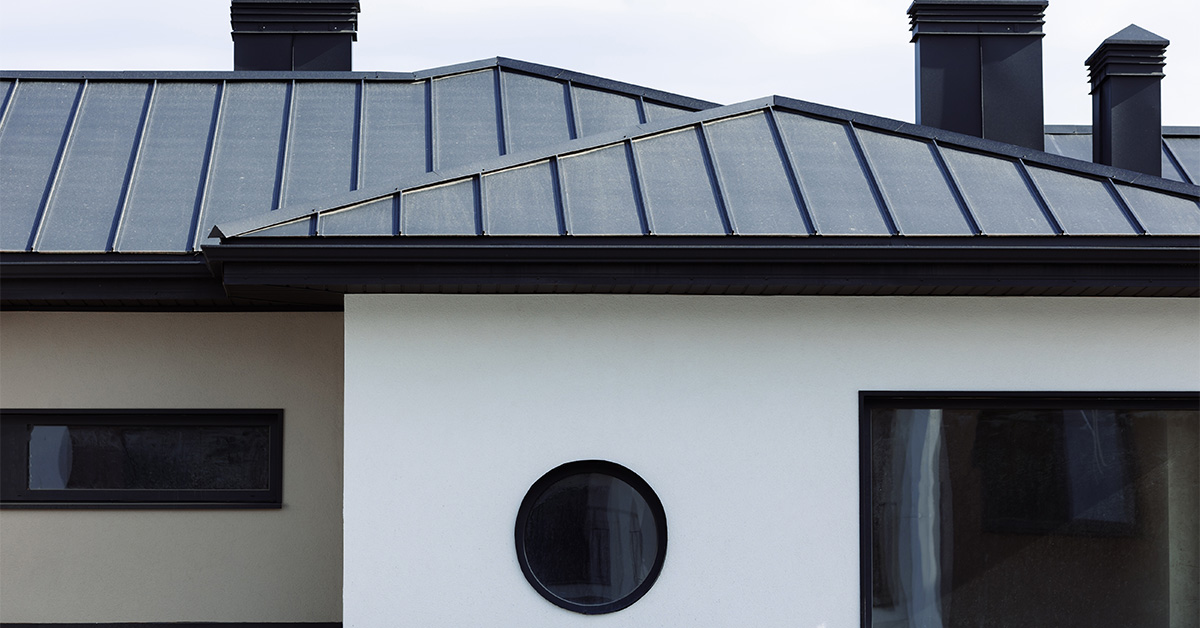
Color and Style Guidelines
Beyond materials, HOAs also regulate the colors and styles of roofs to maintain neighborhood uniformity. Neutral tones like gray, brown, black, and earth shades are often encouraged, as they blend well with the overall community aesthetic. Additionally, roofing styles must align with the neighborhood’s established character to ensure visual consistency.
Maintenance Expectations
HOAs require homeowners to keep their roofs in good condition. This typically involves regular inspections and addressing any damage promptly, such as issues caused by storms. Staying proactive with maintenance helps ensure your roof remains compliant with community standards and contributes to the neighborhood’s overall appearance.
HOA Roofing Approval Process Steps
Getting approval for your roofing project from your HOA requires submitting detailed paperwork and following specific procedures. Here’s an overview of what the process involves and how long it might take.
Required Documents and Plans
To start, you’ll need to submit a comprehensive application for your roof replacement. This should include architectural drawings and project specifications that clearly detail the design, dimensions, and installation process. Providing material samples – like shingle pieces, color swatches, or tile samples – can help the HOA board visualize your proposed materials.
Additionally, include the following:
- Contractor credentials and insurance certificates to demonstrate your project’s reliability.
- A project timeline outlining start and end dates, work hours, and safety protocols.
- Copies of any permits required by local authorities.

Once you’ve gathered all these documents, double-check everything to ensure your submission is complete. This can help you avoid unnecessary delays. Keep reading for an idea of how long the approval process might take.
HOA Approval Timeframes
The timeline for HOA approval can vary widely, ranging from a few weeks to several months. Factors like the complexity of your project and the HOA board’s meeting schedule play a big role. If your paperwork is submitted right after a board meeting, it may sit until the next scheduled review.

Submitting a thorough and well-prepared application is key to keeping things on track. To avoid setbacks, plan ahead and send in your documents well before your intended start date. This gives you enough time to address any feedback or required changes.
Working with Experienced Contractors
Hiring a contractor familiar with HOA guidelines can make the entire process much smoother. These professionals know what documentation and material standards your HOA will expect, making them valuable partners in navigating the approval process.
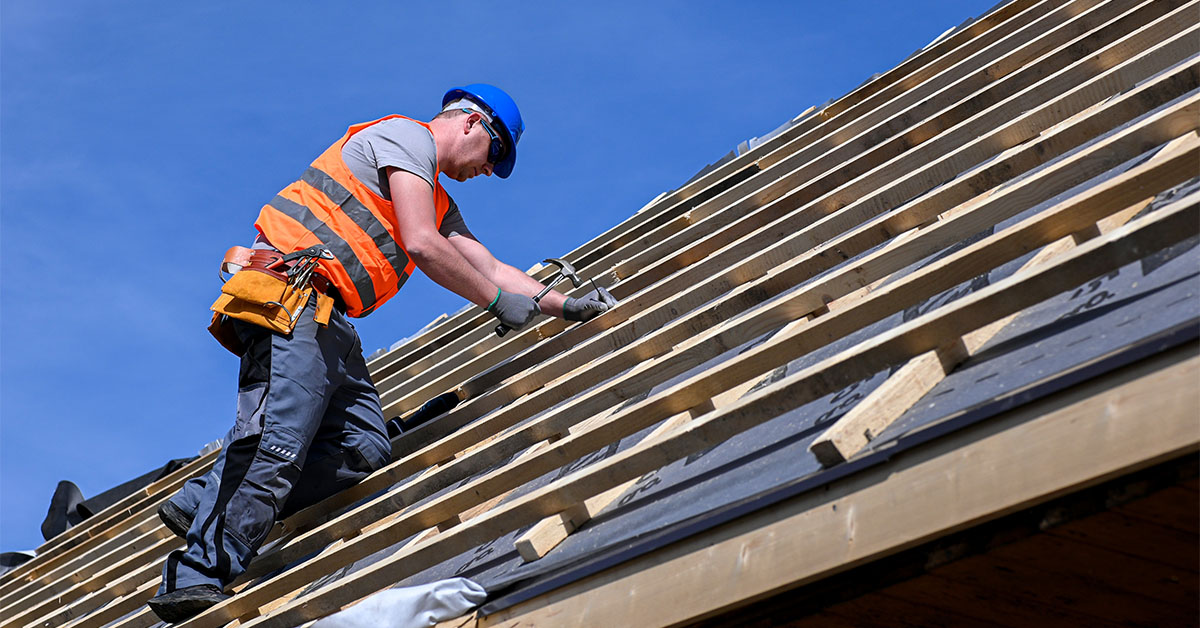
For example, Pro-Tech Roofing has extensive experience working with HOAs in Tulsa. They understand the specific requirements local associations demand, from paperwork to material compliance. By choosing licensed and insured contractors, you add credibility to your application and ensure your project stays compliant from start to finish, helping you avoid violations or penalties.
sbb-itb-66ccccd
Handling HOA Disputes and Problems
Once you’ve navigated the process of getting HOA approval for your roofing project, there’s still a chance you may encounter disputes. Even with careful planning, disagreements can arise. Addressing these issues professionally can save you time, money, and unnecessary stress, all while ensuring the community standards outlined in your HOA guidelines are maintained.
Communicating with HOA Boards
Always submit your requests in writing to establish a clear record of communication. Be specific about the details of your roofing project, and reference the relevant sections of the HOA covenants or architectural guidelines to support your case.
Attending board meetings is another effective way to communicate directly with decision-makers. Most HOAs hold regular meetings where homeowners are given time to voice concerns. When presenting your case, keep it brief and focus on how your project aligns with the community’s standards, rather than emphasizing personal preferences.

Maintain a respectful and solution-oriented tone in all interactions. Even if you’re frustrated, avoid emotional or confrontational language. Remember, HOA board members are volunteers and are more likely to respond positively to calm, respectful communication. Frame your requests in a way that highlights the broader benefits to the community, such as increased property values or improved neighborhood appearance.
Addressing Rejected Applications
If your roofing application is denied, the HOA is required to provide specific reasons for the rejection. Common issues include non-compliant materials, incomplete documentation, or failure to meet architectural guidelines. Carefully review the denial letter and make note of the areas that need attention.
In many cases, revising your application can resolve the problem. For example, if your preferred shingle color is not approved, research alternatives from the HOA’s list that align with your vision. If the issue is incomplete documentation, work with your contractor to provide additional details, such as technical specifications, installation methods, or warranty information. Often, a small adjustment in materials or design can turn a rejection into an approval.

You might also consider scheduling a pre-submission meeting with the architectural review committee before resubmitting your application. These informal discussions can help clarify expectations and reduce the chances of future rejections. Bring updated plans, material samples, and any additional information that addresses the concerns raised in the initial denial. If these steps don’t resolve the issue, you may need to explore formal dispute resolution options.
Steps for Resolving Disputes
If standard communication efforts fail, your first step should be to file an internal appeal. Most HOA governing documents outline the process, which typically involves submitting a written request for reconsideration within a set timeframe, often 30 days. Use this opportunity to address the reasons for rejection and provide any new evidence or clarifications.
Mediation is another option if direct negotiations stall. This involves a neutral third party who helps both sides reach a compromise. Many HOAs favor mediation over costly legal disputes, as it’s a less adversarial and more efficient way to resolve issues while meeting both parties’ needs.

If the dispute involves potential violations of HOA covenants, discriminatory practices, or procedural errors by the board, consulting a real estate attorney may be necessary. Attorneys specializing in HOA law can review your case and advise whether pursuing legal action is worth the effort. However, litigation should always be a last resort due to the time, expense, and potential strain on neighborhood relationships.
For more serious disputes, state and local resources can offer additional support. For instance, Oklahoma‘s real estate commission provides guidance on HOA regulations, while local housing authorities can mediate conflicts. These resources are particularly helpful when dealing with procedural violations or unreasonable demands that exceed an HOA’s authority.
Staying Compliant and Protecting Your Roof
Once you’ve secured HOA approval, staying compliant is crucial. Beyond the approval and dispute resolution phases, ongoing maintenance plays a key role in preventing future problems. Regular upkeep not only keeps your roof in great shape but also helps you avoid fines and maintain a good rapport with your HOA board. Let’s dive into the steps you can take to keep your roof in line with HOA expectations.
Regular Roof Inspections and Maintenance
Many Tulsa HOAs require homeowners to maintain their roofs in good condition. Scheduling seasonal professional inspections can help you catch problems like loose shingles, damaged flashing, or clogged gutters before they escalate.
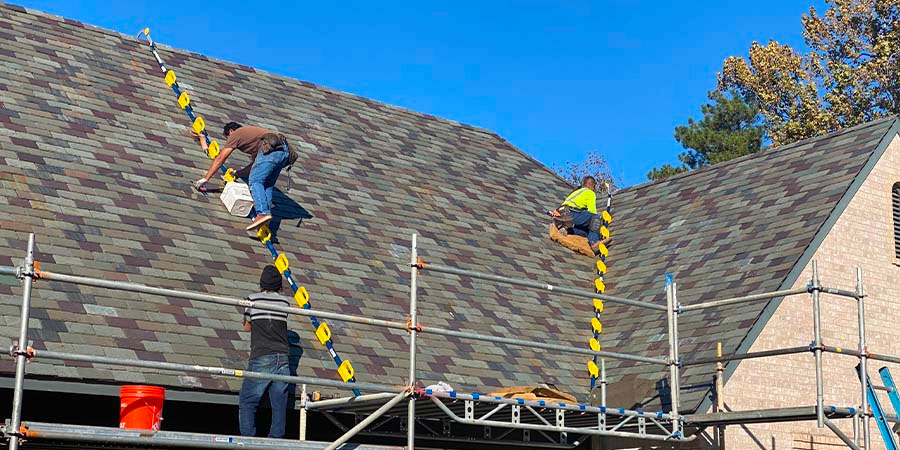
During these inspections, it’s important to look for common issues such as missing or broken shingles, moss or algae growth, and the state of your gutters and downspouts. Tackling these problems early ensures your roof stays structurally sound and visually appealing, meeting HOA standards.
HOAs often expect homeowners to address identified issues promptly. Staying ahead of these repairs can save you from rushed fixes and the potential for penalties.
Avoiding Non-Compliance Fines
Routine maintenance doesn’t just protect your roof – it also helps you dodge costly fines. HOA roofing violations can lead to escalating penalties if not resolved quickly. Familiarize yourself with your HOA’s enforcement process, which often begins with a courtesy notice giving you time to make corrections. If left unaddressed, this can escalate to formal violation notices with deadlines and fines, and possibly stricter measures.
Keeping thorough documentation is a smart move. Take regular photos of your roof’s condition, save records of all maintenance and repairs, and hold onto receipts and contractor certifications. This can be a lifesaver if you ever need to dispute a violation.
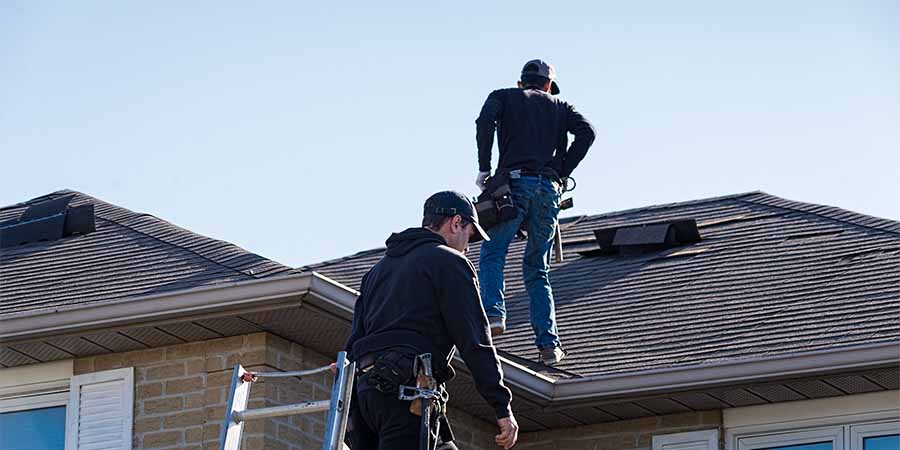
Some HOAs may offer compliance assistance programs, which can help you set realistic timelines for resolving violations, especially when repairs are expensive. If you’re facing a significant roofing issue, reach out to your HOA board right away to discuss options like payment plans or deadline extensions rather than letting the problem linger.
Partnering with Pro-Tech Roofing for Peace of Mind
Working with a local contractor who understands Tulsa HOA requirements can make compliance much easier. Pro-Tech Roofing offers free roof inspections to spot potential issues early, helping you avoid violations. They’re well-versed in the material and color guidelines typical of Tulsa neighborhoods and can recommend options that align with both your preferences and HOA rules.
Pro-Tech Roofing also provides year-round maintenance programs, including inspections, gutter cleaning, minor repairs, and detailed documentation of all work. This proactive approach can help you steer clear of emergency repairs that might require rushed HOA approvals or temporary solutions.
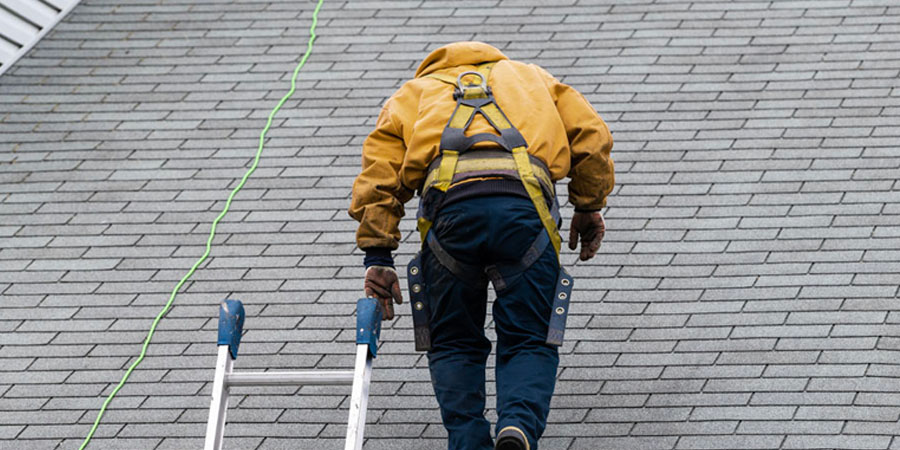
If compliance problems arise, partnering with certified contractors like Pro-Tech Roofing can strengthen your case with your HOA board. Their expertise in handling insurance claims can also be a big help if storm damage leads to urgent repair needs.
Maintenance contracts with Pro-Tech Roofing can save you money by minimizing the risk of emergency repairs. Their detailed reports can be shared with your HOA to demonstrate your commitment to ongoing compliance, which can be especially useful if disputes occur or if you need to negotiate repair deadlines.
Summary: Important Points for Tulsa Homeowners
If you’re a homeowner in Tulsa navigating HOA roofing rules, preparation and communication are key. Start by carefully reviewing your HOA’s guidelines before kicking off any roofing project. These documents outline what materials, colors, and styles are permitted, as well as the approval process for exterior changes. This initial step lays the groundwork for a smoother process.
Always get HOA approval before making any changes to your roof’s appearance. Skipping this step can result in violations, so it’s crucial to submit complete project plans for a hassle-free review.

When hiring a contractor, choose someone licensed, insured, and familiar with Tulsa HOA regulations. Their experience can help with approvals, securing permits, and avoiding compliance issues, ensuring your project meets the rules outlined by your HOA.
Clear communication with your HOA board is essential. Address any questions about guidelines early on to set the right expectations.
Regular inspections and detailed maintenance records are your best defense against future problems. Keeping track of inspections and repairs helps you catch issues early and avoid violations.
If significant roofing problems arise after your project is finished, reach out to your HOA board as soon as possible. Prompt communication can help resolve issues before they become bigger challenges.
FAQs
What should I do if my HOA denies my roofing application in Tulsa?
If your HOA turns down your roofing application in Tulsa, the first step is to carefully review the HOA’s governing documents, such as the Covenants, Conditions, and Restrictions (CC&Rs). These documents will explain the specific rules and provide details about the denial process, including how to appeal or request reconsideration.
After that, consider contacting the HOA board directly to get clarification or discuss possible changes to your application. Open and clear communication often helps resolve misunderstandings or find middle ground. If the issue remains unresolved, it might be time to consult a legal professional who specializes in HOA regulations to better understand your rights and options. Throughout the process, make sure to keep thorough records of all correspondence and decisions – these could be crucial if further action is necessary.
How can I make sure my roofing project follows Tulsa HOA rules and avoids fines?
To make sure your roofing project aligns with Tulsa HOA rules and steers clear of fines, start by reviewing your HOA’s guidelines. These documents typically detail approved roofing materials, color options, and the steps needed to get your project approved. You can usually find this information in your community’s governing documents.
Before any work begins, submit your project for HOA approval. Most HOAs require this step to uphold neighborhood standards. Skipping this process could lead to fines, which might range from $25 to $200 for minor infractions – or even higher penalties for larger violations or unapproved work.
To keep things running smoothly, maintain clear communication with your HOA. If any requirements seem unclear, ask for clarification, and always keep records of your approvals. Taking these steps upfront can help you avoid unnecessary disputes or penalties down the road.
Why should I hire a contractor who knows Tulsa HOA roofing rules?
Hiring a contractor who knows the ins and outs of Tulsa HOA roofing rules can make your project much easier. They’re familiar with the community guidelines, including requirements for materials, colors, and documentation, which helps you steer clear of fines or delays.
An experienced contractor can also save you time and help avoid conflicts with your HOA. They’ll ensure your roof meets all the necessary standards, so you can handle the process without added stress.
